Author(s): Rahim Omar
Puberty associated gingival enlargement is one of the gingival diseases categorized as dental plaque induced gingival diseases modified by endocrine system, in the currently accepted periodontal disease classification. Usually, a conventional periodontal therapy comprising of oral prophylaxis, scaling and root planning is sufficient to treat the condition. However, in some cases where there is more amount of fibrotic tissue along with the inflammatory, occurring to surgical means is a key to management success.
The purpose of this study is to report a typical presentation of generalized gingival enlargement associated with puberty and highlight the importance of taking an accurate history in achieving a correct diagnosis and improving a best therapeutic approach to restore aesthetic and masticatory functions.
In the present case, gingivectomy was the treatment of choice after a non-surgical periodontal management. Patient-reported outcomes were satisfaction and approved esthetic smile.
Gingival enlargement, one of the frequent attributes of gingival disease, is characterized by an increase in the size of gingiva. It is a multifactorial condition that develops in response to various interactions between the host, the environment and the pathologic changes [1].
The most common form is due to plaque induced inflammation of the adjacent gingival tissues. It may be a disfiguring side effect of anti-convulsants, immunosuppressants, and calcium channel blocking agents, or associated with hormonal disturbances as found in puberty and pregnancy [2-4]. It also occurs as a manifestation associated with systemic diseases or syndromes in different types of genetic disorders [1, 4].
According to location, enlargements can be localized or generalized when the gingiva adjacent to almost all the teeth present is involved. Dubey S et al. review in detail all the indices proposed till date to measure the degree of gingival enlargements [5].
Clinically, gingival overgrowth is communally associated with soreness and bleeding of the gum. Based on the extent and severity, it may lead to impairment in aesthetic and masticatory functions. It may also predispose the patient to periodontal diseases.
The therapeutic approaches related to gingival enlargement are based on the etiology and underlying pathological change which has occurred. The prime treatment modalities involve obtaining a detailed medical history and non-surgical periodontal therapy. Surgical excision of the lesion is provided secondary to retain esthetical and functional demands [6,7]. Furthermore, the use of laser treatment is a valid alternative to traditional surgical intervention [8, 9].
The following case highlights a presentation of pubertal gingival enlargement encountered in our practice.
The study was carried out in our periodontology service and was performed in accordance with the Declaration of Helsinki [10].
The patient was able to give consent to participation after receiving oral and written information.
It was conducted on a 17-year-old female patient with painless, gingival bleeding and esthetic complaints.
On intraoral examination, a reddish pink bulging of the interproximal papillae with blunt and rounded marginal gingiva was seen on the facial surface extending from the mesial surface of #33 to mesial surface of #43 (Figure 1). It was spineless, friable and edematous. There was a presence of marginal plaque and false periodontal pockets with bleeding on probing (Figure 2).
A lack of bone lysis, a decayed of #36 and defective filling of #46 were also noticed in panoramic radiography (Figure 3)
After the first medical examination, the patient underwent an initial non-surgical periodontal treatment. A thorough scaling and root planning was done to remove the local irritating factors and patient education was done regarding good oral hygiene maintenance practices. In addition, dental caries detected on #36 and #46 have been treated.
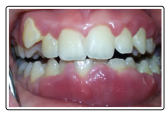
Figure 1: Puberty associated enlargement: gingival inflammatory with typical multiple. Interproximal enlargements soft, red and edematous
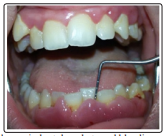
Figure 2: False periodontal pockets and bleeding on periodontal probing
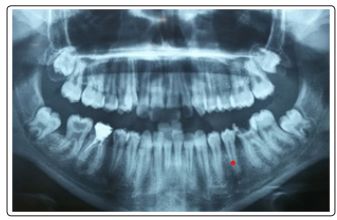
Figure 3: Lack of bone lysis #36 decayed and defective filling of #46
After a period of 1 week to 2 months, treatment outcome was evaluated.
According to the medical history which revealed that gums had started swelling up in concomitance with the first menstruations (Table 1), we associated the clinical features to the hormonal influences occurring in puberty
Table 1: Profile of the Patient’s history| Patient | Age | Gender | Patient Complaints | Time of beginning | Medical history | Etiologic factors |
|---|---|---|---|---|---|---|
| M.H | 17 | F | Painless Gingival bleeding Esthetic | 4 years | First menstruations at 13 years old | Hormonal |
On re-evaluation (Figure 4), face of the subsisted inflammatory and fibrous components of the enlarged gingiva which stilled to compromise the routine oral hygiene measures, gingivectomy was performed (Figure 5). The bulge of the gingival excess was excised and a periodontal dressing was applied on the operated area (Figure 6)
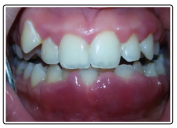
Figure 4: Control after 1 week
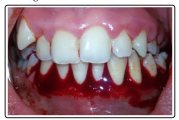
Figure 5: Gingivectomy

Figure 6: Periodontal dressing implementation
The patient was recalled after 1 week for removal of periodontal pack. The healing was uneventful and no relapse was seen (Figure 7). After one month, the patient had an aesthetically satisfactory gingival appearance and no sign of recurrence (Figure 8).
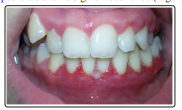
Figure 7: Gingival architecture restored 3 weeks after baseline
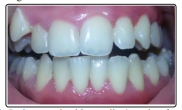
Figure 8: Patient regained her smile 6 weeks after baseline
Puberty associated gingival enlargement is one of the gingival diseases categorized as dental plaque induced gingival diseases modified by endocrine system, in the currently accepted periodontal disease classification [3, 4]. At puberty, there is a marked increase in testosterone levels in males and estrogen and progesterone in females. These sex steroid hormones wield their effects on the gingiva by influencing the cell division, vascularity, growth and differentiation of fibroblasts and keratinocytes [11]. At this sexual maturation period the exaggerated response of the gingival tissues to plaque and hormonal influence in microbial flora leads to gingivitis or gingival growth [12,13].
On cautious history taking regarding our patient, the gingival enlargement coincided with the onset of her puberty and not appeared to be associated with hereditary forms. For a differential diagnosis, pyogenic granuloma is another common clinical entity which could be taken into consideration. Clinically, the lesion is commonly described as a localized mass lesion rather than a generalized inflammatory one.
The first treatment approach was personal and professional plaque control. Hence to accomplish an esthetic and functional outcome, surgical reduction of the overgrowth was performed by conventional gingivectomy with a scalpel and wound area was covered with periodontal pack for 1 week. Gingivectomy is the treatment of choice in such case. The use of argon, carbon dioxide or diode lasers was an alternative to our approach by blade gingivectomy
The patient was recalled periodically at 1 week, 2weeks and 1 month, during maintenance phase to assess the healing. No recurrence was noted. Patient-reported outcomes were satisfaction and approved esthetic smile.
Successful therapeutic management of pubertal gingival enlargement includes a carefully appraisal of the periodontal health status and its reevaluation. Assessment of the periodontal tissues is based on both the clinical examination and radiographic findings each complementing one another. Patient motivation and compliance during and after therapy is a critical factor in the success of the treatment. Gingivectomy should be an inevitable choice, only after a thorough evaluations and controls
